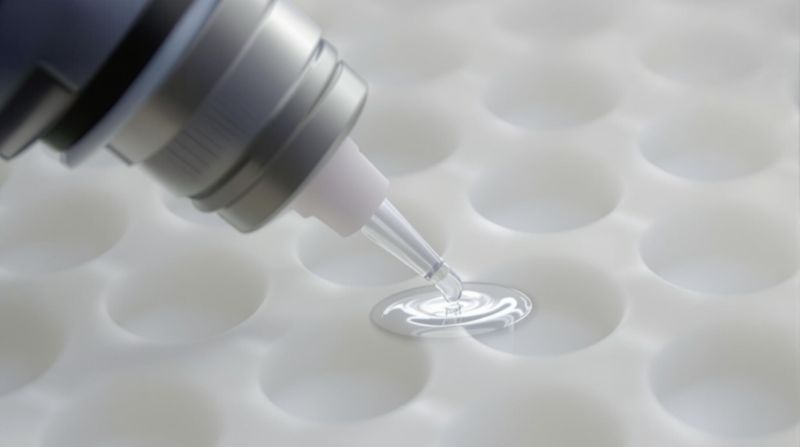
Understanding Adhesive Properties
Types of Adhesives for Filters
Importance of Adhesive Selection
Methods for Adhesive Application
Latest Trends in Adhesive Technology
Strategies for High-Performance Filters
Case Studies in Adhesive Use
Frequently Asked Questions (FAQ)
Understanding adhesive properties is crucial for selecting the right solution in high-performance filtration systems. Essential characteristics include bonding strength, flexibility, and resistance to temperature fluctuations. A strong bond ensures the structural stability of the filter, while flexibility allows the adhesive to accommodate material movement. Choosing adhesives tailored to the operating environment greatly enhances both performance and longevity.
Different filter applications require specific adhesive chemistries:
Epoxy adhesives offer strong mechanical bonding and excellent thermal resistance, making them ideal for harsh industrial conditions.
Polyurethane adhesives provide elasticity and impact resistance, adapting well to movement and vibration.
Cyanoacrylate adhesives are known for their instant bonding properties, suitable for rapid assembly.
Acrylic adhesives deliver versatile adhesion across a range of substrates, supporting broad applications.
Selecting the appropriate type ensures performance reliability in both standard and demanding environments.
Choosing the correct adhesive is fundamental to achieving long-lasting and efficient filter operation. The right selection enables better cohesion between parts, resists external stresses, and adapts to dynamic conditions. For example, fast-bonding adhesives support rapid manufacturing processes, while flexible adhesives accommodate material shifts. A well-matched adhesive can significantly reduce failure rates and increase product lifecycle.
Effective adhesive performance also depends on the application method:
Spray application is ideal for covering large surface areas evenly.
Brush and roller techniques offer control for irregular shapes.
Precision dispensing ensures targeted and consistent bonding, especially for small or intricate parts.
The method chosen should align with both the adhesive's formulation and the physical characteristics of the filter design.
Recent advancements in adhesive technology emphasize sustainability, durability, and adaptability. Key trends include:
Eco-friendly formulations that reduce environmental impact without compromising strength.
Hybrid adhesives combining the benefits of multiple chemistries.
Enhanced temperature and chemical resistance, supporting more extreme operating environments.
Smart adhesives capable of adjusting performance based on conditions such as heat or pressure.
These developments help manufacturers respond to stricter environmental standards and increasing technical demands.
To produce high-performance filters, adhesive selection must be tightly aligned with application requirements. Strategies include:
Choosing adhesives that match thermal, mechanical, and chemical demands.
Prioritizing ease of use and curing speed to streamline manufacturing.
Selecting formulations that enhance flexibility or rigidity based on structural needs.
Leveraging adhesives with multi-surface compatibility for varied filter materials.
These strategies optimize both performance and manufacturing efficiency.
Real-world applications highlight the impact of proper adhesive choice:
A thermal-resistant epoxy was used in an industrial air filtration unit to maintain performance under extreme heat.
A spray-applied adhesive supported fast assembly in a mass-produced air purifier system.
A fast-setting cyanoacrylate solution enabled rapid bonding during time-critical production, reducing downtime.
These cases demonstrate how tailored adhesive selection contributes directly to operational efficiency and product durability.
Q1. What are the key properties to consider when selecting adhesives for filters?
Bonding strength, flexibility, and temperature resistance are essential. These factors ensure filter stability, material compatibility, and environmental durability.
Q2. What types of adhesives are recommended for high-performance filters?
Recommended types include epoxy for strength, polyurethane for flexibility, cyanoacrylate for instant bonding, and acrylic for versatility.
Q3. Why is adhesive selection important for filter performance?
The right adhesive enhances bonding, reduces failure risk, and supports longer operational life by adapting to structural and environmental stresses.
Q4. What methods are commonly used for adhesive application?
Common methods include spray, brush, roller, and precision dispensing, each suited to different materials and production needs.
Q5. What are the latest trends in adhesive technology?
Trends include eco-friendly options, hybrid formulations, improved resistance to heat and chemicals, and smart adhesives responsive to conditions.
Q6. How can I ensure optimal filter functionality through adhesive selection?
Start by analyzing operational demands, then match adhesives based on bonding needs, curing time, and environmental resistance.
Q7. Can you provide examples of successful adhesive use in filters?
Examples include high-temperature industrial filters bonded with epoxy, and quick-assembly filters using spray or fast-setting adhesives.
Q8. What makes fast-bonding adhesives suitable for time-sensitive applications?
Their rapid curing and ease of application make them ideal for high-speed production and emergency repairs.